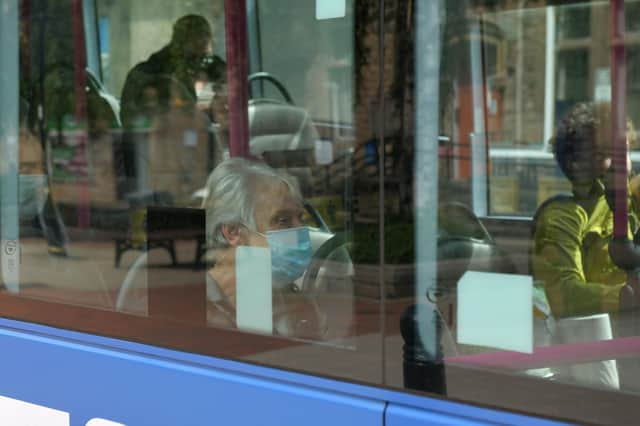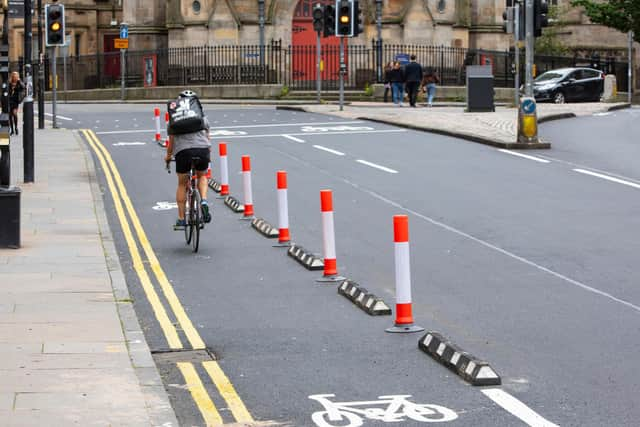Fears over impact of 'significant' public transport demand as lockdown eases


There could be particular pressure on buses because many passengers have few alternatives, and capacity will remain halved or more despite some operators reducing distancing on board from two metres to one.
ScotRail, whose trains are running at 20 per cent capacity, has yet to announce when it will cut distancing to 1m.
Advertisement
Hide AdAdvertisement
Hide AdLabour said there had already been a “drastic” drop in walking and cycling since May while a motoring group said they comprise only a tiny proportion of journeys.


Scottish Government agency Transport Scotland has also admitted there was an “extremely high level of uncertainty” over estimating travel demand.
Passenger numbers are expected to increase with the re-opening of shopping centres today, and bars and restaurants from Wednesday.
Under the current phase three of lockdown easing, hotels and visitor attractions will also re-open their doors that day.
Transport Scotland said cities and surrounding areas were expected to welcome back hundreds of thousands of commuters, visitors and shoppers over the next few weeks.
Mr Matheson said: “Phase three sees more parts of our society and economy reopening and will be one of the most challenging for the public, operators and employers.
“A combination of life slowly returning to some form of normality, the lifting of the five-mile travel rule, the retail sector fully reopening, more people returning to work and the tourism sector restart means demand on public transport will be significant.
“However, we know that even with public transport service levels increasing and physical distancing being relaxed to 1m for some services, capacity is still significantly restricted compared to pre-Covid levels.
Advertisement
Hide AdAdvertisement
Hide Ad“This means people are being asked to continue to work from home if they can, and walk, wheel and cycle where possible.
“The obvious temptation for households with access to a car will be to take that option.
“However, we know many journeys are less than a few miles and could be covered via active travel [walking and cycling], especially over the summer and autumn.
“Our transport operators are continuing to take steps to improve confidence in public transport.
“This includes measures such as enhanced cleaning measures, more sanitisers, mandatory face coverings and screens, and we hope confidence will begin to return.”
Scottish Labour transport spokesman Colin Smyth said cycling rates had fallen by nearly one-fifth in early July compared to mid-May, and were lower than a year ago.
Walking rates were down by almost half on last year.
He said: “We’ve seen a massive decline in the number of cycling and walking journeys in comparison to midway through the crisis – hinting that many new active travellers may have already given it up.”
Neil Greig, the Scotland-based policy and research director of IAM RoadSmart, said: “Whilst we would love to see more cycling and walking for short journeys, the reality is they will still make up a tiny percentage of overall trips.
Advertisement
Hide AdAdvertisement
Hide Ad“Even with an increase of several hundred per cent in cycling, it would still fall far behind the numbers in cars and on public transport.
“That is why it is vital buses and trains get back to normal as soon as possible.
“We would also like to see more innovative thinking around integrating cars and cycling, such as park and cycle sites around our cities.”
A message from the Editor:
Thank you for reading this story on our website.
While I have your attention, I also have an important request to make of you.
The dramatic events of 2020 are having a major impact on many of our advertisers - and consequently the revenue we receive.
We are now more reliant than ever on you taking out a digital subscription to support our journalism.
Subscribe to scotsman.com and enjoy unlimited access to Scottish news and information online and on our app.
Visit https://www.scotsman.com/subscriptions now to sign up.
By supporting us, we are able to support you in providing trusted, fact-checked content for this website.
Joy Yates
Editorial Director
Comments
Want to join the conversation? Please or to comment on this article.